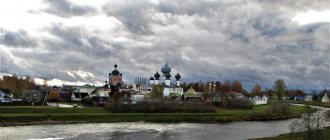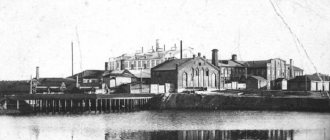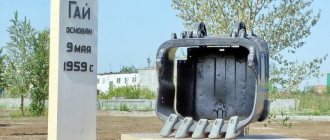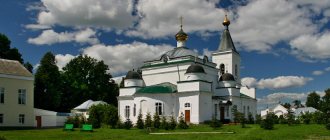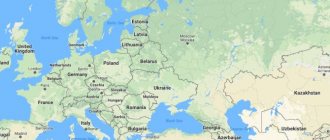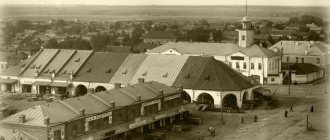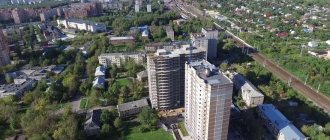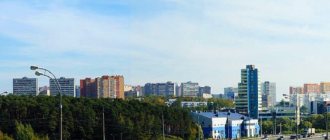Kasimov is a small town in the Ryazan region, which stands on the Oka River in the very center of the Russian Plain. It was founded back in 1152, until 1376 it was called Gorodets Meshchersky, and in 1376-1471. bore the name New Lower City. In addition to the Russian population, representatives of such tribes as the Meshchera, Mordovians and Muroma have long lived in this territory. The sights of Kasimov are as diverse as its history. Below we will introduce you to the most interesting places, attaching descriptions, photos, names and addresses.
The main attractions of Kasimov - TOP-5
Kasimovsky Historical and Cultural Museum-Reserve
- Address - pl. Sobornaya, 7/8.
This museum includes the natural landscape, architectural objects and archaeological relics of the historical center of Kasimov. It is interesting that it was founded here back in 1919, and today its funds already number more than 42 thousand museum objects.
Many of the first employees of the complex were members of the Society of Researchers of the Ryazan Region. In the 1920s the main collections were collected (mainly they were valuables from the estates of the Golitsyns and Olenins, closed churches and monasteries).
In 1928, the museum was closed, and the entire fund was transported to the county department of public education. In 1939, it was located in the building of the former Khan Mosque, at which time it was decided to divide it into two departments - natural and historical.
In 1998, the complex was occupied by a new building - the mansion of the Alyanchikov merchants (19th century). In 2015, it received the status of a museum-reserve.
Today, the Kasimov Museum-Reserve houses a huge collection of paintings and graphics, samples of local crafts (for example, Kasimov bells and clay Vyrkov toys) and traditional clothing.
But the objects of the nobles Golitsyn and Olenin are of particular interest to visitors: household utensils and written sources (manuscripts, private library).
The museum-reserve includes architectural monuments of Cathedral Square, the Kasimov Kremlin and other buildings of the 19th century. In 2017, a permanent exhibition dedicated to the history and ethnography of the Kasimov Tatars opened in the Khan Mosque.
Museum "Russian Samovar"
- Address - st. Sovetskaya, 4.
It is open on all days of the week except Monday - from 10 am to 5 pm. It contains more than 300 samovars, dishes and other accessories for the tea ceremony, as well as some household items.
The museum displays samovars of various types and shapes - a jar, a glass, an acorn, etc. All exhibits are housed in three halls, the most interesting of which is the tea room. Here you can learn about the development and spread of the samovar craft, samovar factories and factories throughout the country.
Kasimov Bell Museum
- Address - st. Ilyushkina, 2/16.
It is available for visiting every day, except Mondays, from 10 am to 5 pm. The Bell Museum was opened to the public in 2014 and is based on the personal collection of Mikhail Silkov, an honorary citizen of Kasimov.
The museum collection includes more than 900 exhibits collected from different parts of Russia, with the help of which you can become familiar with the history of ancient bell making. Among the bells, the predominant ones are Valdai, Slobodsky, Purekh and Kasimovsky (by the way, they are considered the best and most valuable according to collectors).
The museum also contains numerous bells made by local craftsmen - the Kislovs, Skornyakovs, Lenins and Labzenkovs (their autographs can be seen on many items).
Qasim Khan Mosque (another name is Khan Mosque)
- Address - pl. Pobeda, 9A.
The Khan's Mosque is a monument of Tatar architecture for religious purposes. It was built in the 18-19 centuries. in a classical style and is a 2-story building with a dome and a two-tier minaret.
According to information written in Tatar on one of the walls, it began to be built in 1768. Since 1938, the building has been used as a regional museum, and in 2013 it was transferred under the control of the Spiritual Administration of Muslims of the Russian Federation. Today the building of this mosque is included in the list of cultural heritage sites.
Ascension Cathedral
- Address - pl. Sobornaya, 1.
The main cathedral church of Kasimov was erected in 1854 and within a few years it became the most majestic in the city. The Ascension Cathedral is designed in the neo-Russian style by the famous architect Nikolai Voronikhin.
Despite the style direction, Tatar motifs were used in the decorative design of the facades. The cathedral houses the Gospel, printed in 1677, and the icon of John the Baptist. After the revolution, the cathedral was closed, in 1936 the bell tower was equipped with a parachute tower, and in 1960 it was completely dismantled and a sports school for children was placed in the building.
In the 1990s, the Holy Ascension Church was returned to believers, and in 2002 it underwent a major restoration. Now this Kasimov landmark is considered one of the most beautiful churches in the Ryazan region.
The most interesting museums and cultural centers
Museum of Unusual Collections
- Address - st. Sovetskaya, 39.
It opened quite recently - in the summer of 2022. It presents an unusual collection of local collector Igor Aleksandrovich Skripay and his relatives. The themes of the collections are extremely wide - here you can see minerals, tea accessories, airplane models, and much more.
The mission of the museum is to awaken people's interest in collecting, especially in collecting unusual things (for example, figurines of certain animals). The attraction is open in Kasimov every day, except Mondays, from 10 am to 5 pm (on Saturday and Sunday - until 15:00).
Palace of Culture
- Address - st. Academician Utkina, 5A.
The cultural center in Kasimov is open every weekday from 8:30 to 18:00. Its modern building was built in 1965, but its history begins much earlier. Currently, 515 people are employed in creative groups, circles and clubs. The best creative teams of the city work here, many of which bear the honorary title “People’s”.
At one time, such famous personalities in domestic star circles as Joseph Kobzon, Mikhail Shufutinsky and Oleg Gazmanov performed on the stage of the Kasimov Palace of Culture. Despite the fact that the building of the attraction needs restoration, the auditorium is well equipped. This can be seen perfectly in the photo.
Tatar Center for Culture and Art named after Ishimbayev
- Address - st. Bolshakova, 31.
The center occupies the building of a former madrasah from the 19th century. It has an exhibition hall where household items, musical instruments and traditional Tatar clothing are displayed. Arabic and Tatar language courses are organized at this Kasimov attraction. All excursions and master classes are conducted by appointment.
Center for Cultural Development
- Address - st. Sovetskaya, 1a.
This center has created all the opportunities for creative self-realization and cultural development, and the emphasis is primarily on family leisure. From time to time, exhibitions are organized where you can see the work of local artists and craftsmen.
The mission of the complex employees is to introduce local residents and guests of the city to traditional crafts. It runs many circles and clubs of various types, for example, there is an applied arts studio, a painting school and a film club.
How to get there
Kasimov is located 260 kilometers from Moscow and 165 kilometers from Ryazan. By car you can get here from Moscow along the M-5 highway in about 4 hours. You can also come here by bus from the Shchelkovo bus station in about 5.5 hours or from the Ryazan bus station in 3 hours. You can also get here by train from Shilovo station (Ryazan - Ruzaevka line) in 2.5 hours. But this option is the most inconvenient: firstly, you first need to get to Shilov, and secondly, the station is located 8 kilometers from the center of Kasimov, on the other side of the Oka, and getting from it to the city’s attractions is not so easy.
Muslim landmarks
New mosque
- Address - st. Narimanov, 20.
Due to the fact that the Qasim Khan Mosque could no longer accommodate the number of Muslim believers who lived in Kasimov, a New Mosque was created in 1906. The initiator of its construction was the merchant Nigmatulla Ibragimovich Duimakaev, who allocated his own plot for construction.
During Soviet times, the building of this Islamic temple was not used for its direct religious purpose, but in 1996 it was again returned to Muslim believers. Today this is the most important mosque of Kasimov, although in terms of beauty, as reviews say, it is still inferior to Qasim Khan.
Tekie (tomb) of Shah Ali Khan
- Address - pl. Victory.
We are talking about a monument of medieval architecture in Kasimov. One of the inscriptions in the tomb says that it was created in 1556. Around this inscription are lines from the Koran in calligraphy.
In 1887, restoration work was carried out here for the first time. At the end of the 19th century, iron doors and fences appeared in the tekie. Now it is a branch of the Kasimovsky Historical and Cultural Museum-Reserve; it is a rectangular white stone 5-meter structure with vaulted brick ceilings and arched openings, made of limestone.
Teki Khan Shah-Ali consists of two rooms - the large one is where the ruler himself and his relatives are buried, and the small one is intended for commemoration and reading the Holy Scriptures of the Muslim Bible.
Tekie of Sultan Afghan Mohammed
- Address - pl. Victory.
The rectangular vaulted tomb made of red brick is located on the Old Posad in Kasimov. The two-chamber mausoleum was erected in 1649 by craftsmen from Ryazan. It is made in the style of traditional Tatar architecture, but the exterior used details of Russian brick patterning, covered with colored glaze.
The main façade is richly decorated and has two windows on the sides, and above the entrance there is an inscription in Arabic indicating the date of death of Afghan-Muhammad (1648).
The place for Tekie Afghan-Muhammad was not chosen by chance, because in the 17th century this was where the Tatar cemetery was located. The mausoleum is amazing because almost 400 years have passed since its construction, but it has retained its original appearance and continues to amaze with its splendor.
Cathedral Park
On the other side of the square is Cathedral Park. A very cozy place where you can escape the sultry summer heat. The park lacks a fountain, benches and flower beds.
Instead of a fountain in the center, there is a foundation stone for the monument to Admiral Avinov.
And instead of flower beds there are weeds. I hope that our “Museum of Devastation” will not receive a new exhibit in the form of this park.
In the park on the side of Sovetskaya Street there is an Obelisk to the fallen Bolsheviks.
The stele is decorated with loud slogans: “We will show the world a new world, labor will be the ruler of the world,” “Proletarians have nothing to lose except their chains. They will gain the whole world."
Orthodox temples and churches
Church of the Assumption of the Blessed Virgin Mary
- Address - pl. Sobornaya, 1a.
The current stone building of this Kasimov church was built in 1775. Before the revolution, the miraculous icon of the Dormition of the Virgin Mary was located here. In 1934 the temple was closed and from 1936 it was used as a library, and from 1939 – as a warehouse. In the 1990s, the parish was returned to believers.
Church of the Annunciation of the Blessed Virgin Mary
- Address - pl. Sobornaya, 13a.
The Annunciation Church was founded in 1740; Kasimov residents consider it the most beautiful religious building in the city. During Soviet times, services were not held here. The Church of the Annunciation was returned to believers in 1994.
Church of St. Nicholas the Wonderworker
- Address - pl. Nikolskaya, 11a.
It was erected in 1705 and has survived to this day. From 1943 to 1990 St. Nicholas Church was the only active Orthodox parish of Kasimov. From pre-revolutionary times, a carved gilded iconostasis of the 18th century remained in it, and there are also 5 icons with pieces of holy relics.
Church of the Life-Giving Trinity
- Address - st. Sverdlova, 1b.
This temple was built in 1753, and in 1772 a stone octagonal bell tower was added to it. Trinity Church is built according to an architectural plan called “octagon on quadrangle”. In 1938 it was closed, placing here first a warehouse and then a workshop for restoration work. In 2002, the temple again began to be used for its religious purpose.
Church of the Epiphany
- Address - st. Oktyabrskaya, 8a.
The Epiphany (St. George) Church is considered the first stone church in Kasimov. It was built back in 1700 in the former Pushkarskaya Sloboda. The architectural style is Baroque. During Soviet times, there was a warehouse for raw hides here, and in 1995 the church opened its doors to believers.
Church of Elijah the Prophet
- Address - st. Okskaya.
This stone temple began to be built in 1811 on the initiative of the merchant Dmitry Semenovich Kakushkin. Construction was completed in 1848, and in 1866 a bell tower appeared at the parish. In 1929, the Elias Church was closed and the building was not used in any way during Soviet times. In 2002, restoration work began, and already in 2003 the church doors were opened to believers. Today, the Temple of Elijah the Prophet is not just an Orthodox landmark of Kasimov, but also a cultural monument of federal significance.
City architectural monuments
House of Ahmed Castrova
- Address - st. Bolshakova, 33.
This architectural monument is located on the territory of the so-called Tatar Settlement. The Castrov merchant family purchased a mansion on the Embankment at the beginning of the 20th century. The owner of the house was Akhmed Khairulovich Kastrov, one of Kasimov’s leading entrepreneurs. After nationalization, during Soviet times, this building housed an orphanage, and then a maternity hospital and a antenatal clinic attached to it. Since 2012, the building has not been used in any way, but is included in the list of cultural heritage sites of the Ryazan region.
Skornyakov's House
- Address - pl. Sobornaya, 15.
A two-story mansion appeared on Kasimov Cathedral Square at the end of the 18th century. It is a stone structure with a balcony with four columns and a wide stone gate. At the top of the facade there is a triangular pediment in the shape of a semicircle. The width of the walls is approximately 1 m. The architectural style is Empire.
The owner of the house, Skornyakov, was a wealthy zemstvo figure. There are legends that many caches and a secret tunnel were hidden inside.
Then the owners of the building changed several times, and since 1914 an infirmary was located here. In Soviet times, in Skornyakov’s house there was a factory dormitory on the first floor, and on the second floor there was a natural science department of the regional museum. Today the building is an ordinary residential building, which, however, does not diminish its beauty.
Kasimovsky shopping arcades
- Address - pl. Sobornaya.
The Kasimov Tatars have long been engaged in trading activities: they sold honey, handicrafts and other goods. In the XVIII-XIX centuries. both Tatars and Russians began to erect buildings for trade. They were rectangular brick one-story structures.
In Kasimov there were several shopping arcades that belonged to Tatar merchants. And although almost all of them are now privately owned, they still remain striking architectural objects that characterize the everyday culture of the Kasimov Tatars.
Where to go with children in Kasimov
Museum of Translator Anna Hansen
- Address - st. Nikolsky ravine, 1.
Here, by appointment, excursions are regularly organized, including for children - with elements of theatrical performance and tea drinking. The idea of opening such an establishment belongs to Kasimov local historian A.N. Smirnov, who dreamed of introducing city guests to the life of Anna Hansen, a translator of the books of the famous children's writer Hans Christian Andersen. Among the exhibits you can see “galoshes of happiness”, tin soldiers and other items related to Andersen’s work.
Apartment-museum “Butterflies and dragonflies”
- Address - pl. Sobornaya, 10a.
Like the Museum of Unusual Collections, the Collection of Butterflies and Dragonflies is an initiative of Igor Skripai. A local collector began collecting butterflies as a child, but his collection includes more than just real insects. Here you can see a collection consisting of jewelry, paintings, stamps, boxes and even fossil fragments with butterflies and dragonflies. The establishment is popular not only among local residents, but also among tourists from other Russian cities and foreign countries. The attraction is especially delightful for children.
Don't miss the sights in Skopin, Gus-Zhelezny, Spas-Klepiki and Ryazan.
The city of Kasimov is interesting from a historical and cultural point of view. It is usually visited by tourists interested in the culture and history of the Ryazan region and all of Russia as a whole. Moreover, in 2015 Kasimov was included in the list of tourist routes “Golden Ring of Russia”. First of all, city guests strive to see medieval Muslim architecture, Orthodox churches and unusual local museums, which we told you about by showing the sights of Kasimov in the photo.
General information
The Ryazan region arose in 1937, and Kasimov became part of it. Kasimov's main industrial enterprise in our times is the state-owned Prioksky Non-Ferrous Metals Plant.
The historical past of Kasimov is rich in events, so the city has preserved many interesting architectural and historical monuments, both Muslim and Orthodox.
Interesting Facts:
* The city of Kasimov was called Gorodets Meshchersky until 1376, then until 1471 - New Lower City.
* From 1452 to 1681 there was the Kasimov Khanate, founded by the Tatar princes Kasim and Yakub.
* The last ruler of the Kazan Khanate, Syuyumbike, died in Kasimov.
* The last Tsar of Kasimov was the nobleman Ivan Balakirev, the jester of Peter 1. He received the title of “Tsar of Kasimov” by decree of Catherine 1, after the death of Peter 1. Ivan Balakirev died in Kasimov and was buried there.
* In 1567, Shah Ali Khan was on the Kasimov throne.
In 1575, Ivan the Terrible temporarily made him Tsar and Grand Duke of All Rus' and Grand Duke of Tver under the name Simeon. After 11 months, Ivan the Terrible removed him.

